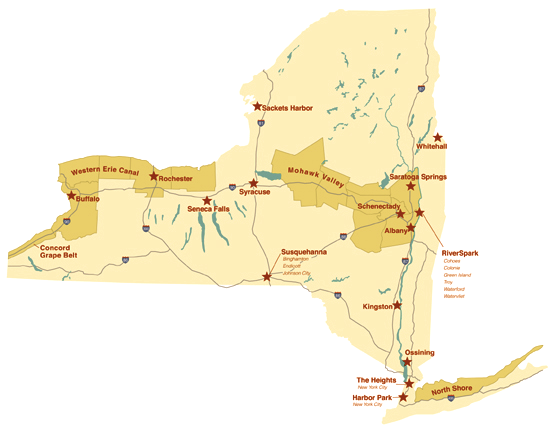To provide observations and information on the emerging fields of landscape scale conservation, heritage preservation, and sustainable community development.
Newsletter
Stay up-to-date with the latest nature, culture and community news.
We won’t spam you or share your information. Newsletters are sent approximately 10 times a year. Unsubscribe at any time.
1981 and 2017: What Can We Learn?
Flagging Sites of Universal Value

New National Heritage Areas: The Time has Come
Bills designating new National Heritage Areas have been introduced for several Congressional sessions, but nothing happened. That is until this year, when with surprising speed and overwhelming majorities, the Senate and House passed the Natural Resources Management Act. This bill is already being celebrated and rightly so for permanently reauthorizing the Land and Water Conservation Fund,creating three new national monuments, expanding park boundaries and so on. What has been less discussed in the over 600 pages of this legislation is the designation of six new National Heritage Areas.

Highway Planning on a Landscape Scale: The Next Generation
What happens when a highway project, long planned to improve the functionality of the overall transportation system, runs up against new designations that look at the value of resources on a landscape scale? How can infrastructure development manage this changing landscape? After all it does not look like this kind of thinking is going away. Read the back story and some recommendations for the future.

The National Park Service Brand: Do I have a Franchising Opportunity for You!
Over the last year the George Wright Journal has been running a series of Centennial Essays reflecting varying perspectives on the future of the National Park Service. The most recent piece by Holly Fretwell, a research fellow at the Property and Environment Research Center (PERC) in Bozeman, Montana, offers some new ideas.

New York State Parks: Funding Heritage Innovation
Urban cultural parks and heritage areas have a history that now dates back almost four decades, yet they often still struggle to receive adequate and predictable support at the local, state and federal levels. Why do programs so often touted as the future of conservation and preservation receive so little support from agencies and public officials charged with managing their funding?
National Heritage Areas Receive Holiday and Anniversary Gifts
Congress wrapped up the 2014 session with two big Christmas tree bills with lots of presents for the National Heritage Areas (NHA). The first was the National Defense Authorization Act, which extended National Park funding for fifteen of the National Heritage Areas. Then a couple of days later along came the Omnibus Appropriations Bill for 2015, which increased funding for the program from the administration’s original 2015 request of $9.2 to $20.3 million dollars.

New National Heritage Areas: The Time has Come
Bills designating new National Heritage Areas have been introduced for several Congressional sessions, but nothing happened. That is until this year, when with surprising speed and overwhelming majorities, the Senate and House passed the Natural Resources Management Act. This bill is already being celebrated and rightly so for permanently reauthorizing the Land and Water Conservation Fund,creating three new national monuments, expanding park boundaries and so on. What has been less discussed in the over 600 pages of this legislation is the designation of six new National Heritage Areas.

Highway Planning on a Landscape Scale: The Next Generation
What happens when a highway project, long planned to improve the functionality of the overall transportation system, runs up against new designations that look at the value of resources on a landscape scale? How can infrastructure development manage this changing landscape? After all it does not look like this kind of thinking is going away. Read the back story and some recommendations for the future.

The National Park Service Brand: Do I have a Franchising Opportunity for You!
Over the last year the George Wright Journal has been running a series of Centennial Essays reflecting varying perspectives on the future of the National Park Service. The most recent piece by Holly Fretwell, a research fellow at the Property and Environment Research Center (PERC) in Bozeman, Montana, offers some new ideas.

New York State Parks: Funding Heritage Innovation
Urban cultural parks and heritage areas have a history that now dates back almost four decades, yet they often still struggle to receive adequate and predictable support at the local, state and federal levels. Why do programs so often touted as the future of conservation and preservation receive so little support from agencies and public officials charged with managing their funding?
National Heritage Areas Receive Holiday and Anniversary Gifts
Congress wrapped up the 2014 session with two big Christmas tree bills with lots of presents for the National Heritage Areas (NHA). The first was the National Defense Authorization Act, which extended National Park funding for fifteen of the National Heritage Areas. Then a couple of days later along came the Omnibus Appropriations Bill for 2015, which increased funding for the program from the administration’s original 2015 request of $9.2 to $20.3 million dollars.


